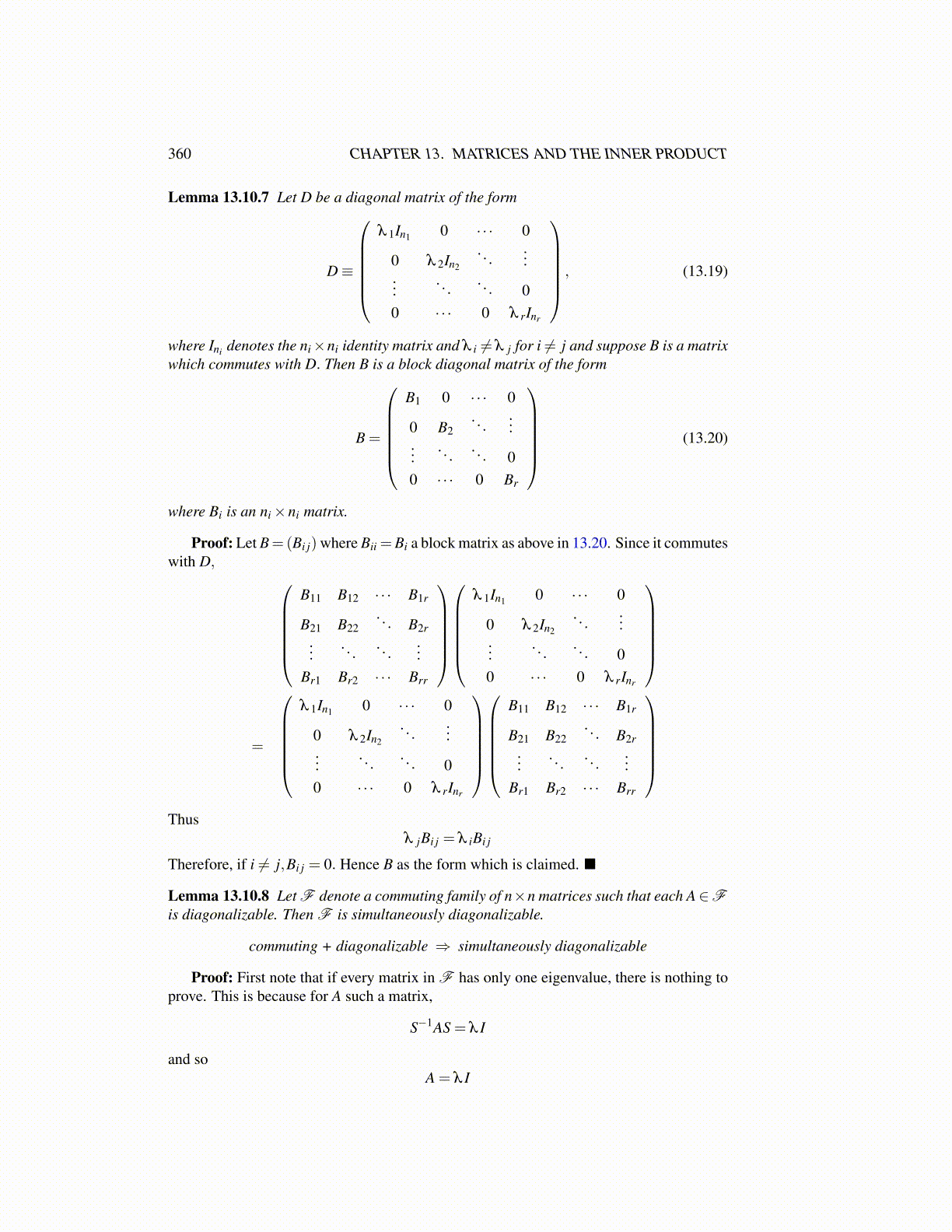
360 CHAPTER 13. MATRICES AND THE INNER PRODUCT
Lemma 13.10.7 Let D be a diagonal matrix of the form
D≡
λ 1In1 0 · · · 0
0 λ 2In2
. . ....
.... . .
. . . 00 · · · 0 λ rInr
, (13.19)
where Ini denotes the ni×ni identity matrix and λ i ̸= λ j for i ̸= j and suppose B is a matrixwhich commutes with D. Then B is a block diagonal matrix of the form
B =
B1 0 · · · 0
0 B2. . .
......
. . .. . . 0
0 · · · 0 Br
(13.20)
where Bi is an ni×ni matrix.
Proof: Let B=(Bi j) where Bii =Bi a block matrix as above in 13.20. Since it commuteswith D,
B11 B12 · · · B1r
B21 B22. . . B2r
.... . . . . .
...Br1 Br2 · · · Brr
λ 1In1 0 · · · 0
0 λ 2In2
. . ....
.... . . . . . 0
0 · · · 0 λ rInr
=
λ 1In1 0 · · · 0
0 λ 2In2
. . ....
.... . . . . . 0
0 · · · 0 λ rInr
B11 B12 · · · B1r
B21 B22. . . B2r
.... . . . . .
...Br1 Br2 · · · Brr
Thus
λ jBi j = λ iBi j
Therefore, if i ̸= j,Bi j = 0. Hence B as the form which is claimed. ■
Lemma 13.10.8 Let F denote a commuting family of n×n matrices such that each A∈Fis diagonalizable. Then F is simultaneously diagonalizable.
commuting + diagonalizable ⇒ simultaneously diagonalizable
Proof: First note that if every matrix in F has only one eigenvalue, there is nothing toprove. This is because for A such a matrix,
S−1AS = λ I
and soA = λ I